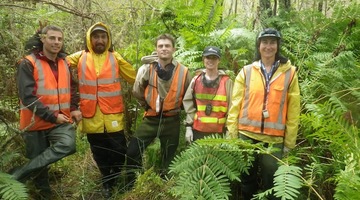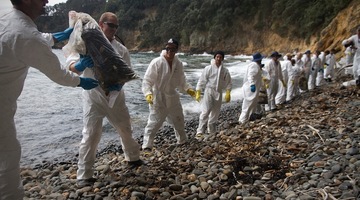The Ake Ake model is a pictorial mapping of someone’s perspective. Researcher Lorraine Dixon uses the model to encourage iwi to share their views including values and possible issues around maintaining those values. They are also encouraged to represent what they would like the future to look like.
Transcript
LORRAINE DIXON
The Ake Ake model is a pictorial cultural mapping of someone’s perspective.
It highlights the values of the past and the issues of maintaining values in the present and also what does the future map look like.
There’s three steps in the Ake Ake model whereby kaumātua draws the picture of the past, rangatahi and kaumātua talk about the picture of the present, and rangatahi, kaumātua and also kōhanga level can all develop a picture of the future. Each individual person draws a picture of the future, and they talk about their picture. And then once you start talking about their picture, you start seeing common themes coming through.
MATAWHAITI NEPE-POHATU
I want all the eels in the river so we can have some kai.
LORRAINE DIXON
The common themes that I observe is mainly about mana whakahaere. Culturally is restoring the cultural values and generational knowledge and transferring that knowledge down to the next generation.
KAURI BLUEGUM
…make it bigger so we can have our kapa haka…
LORRAINE DIXON
Socially is the connection to the awa through kotahi and whānau. Environmentally is to be the ideal kaitiaki by walking in both worlds, obtaining knowledge from western science as well as maintaining and restoring knowledge of the cultural perspective and walking and carrying those two baskets through.
Economically is to be utilising the natural resources that we have and to become economically sustainable but at a unique cultural community perspective.
I find that, for whānau, especially Māori, they can explain themselves more at a pictorial view, rather than sitting down and having a hui where, out of 20, you’ll have five people participating, the rest are sitting back and just listening and not participating. This Ake Ake model actually gives you 100% participation, and whānau enjoy it because they are contributing towards their future map, and no one’s wrong, everyone’s right.
It’s a facilitation technique which gives us a better output in the decision-making rather than having a selective few deciding on behalf of everybody. This is a collective approach.
It’s the next generation’s responsibility to carry their aspirations on into another 50 years’ time. It just carries on and on and on, and so that’s why we called it the Ake Ake, the forever and ever.
Acknowledgements:
Lorraine Dixon
Timi Manukau
Turipuku McRae-Wiki
Kauri Bluegum
Matawhaiti Nepe-Pohatu
Tukaroto Mahuta
Reremoana Marshall-Heremia
Te Kura Kaupapa Māori o Rakaumangamanga
The Waikato Tainui College for Research and Development acknowledges the financial support given by the Waikato River Cleanup Trust Fund which is administered by the Waikato River Authority.
The Waikato River Cleanup Trust does not necessarily endorse or support the content of the publication in any way.





